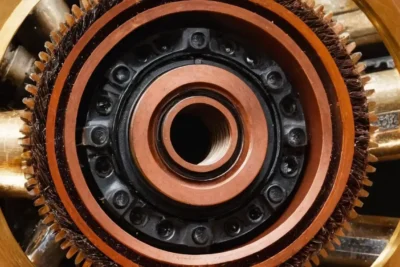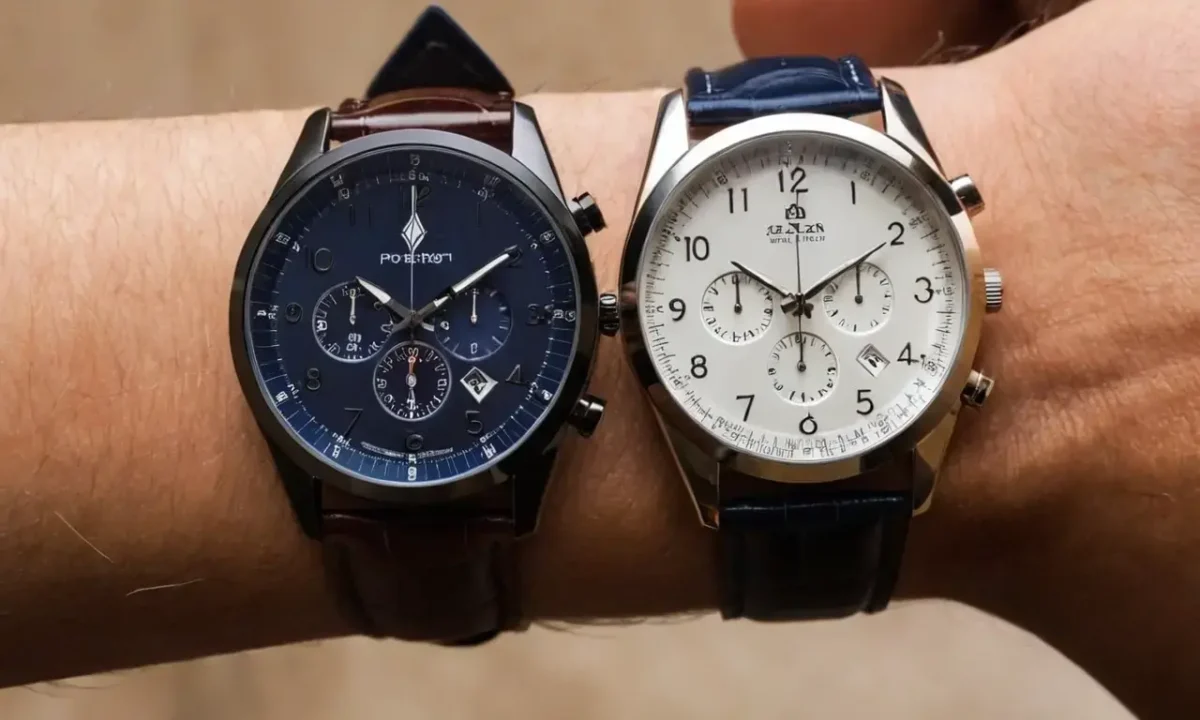
Quartz Watch: Precision Timekeeping Through Piezoelectricity

A quartz watch is a timepiece that utilizes the piezoelectric effect, a phenomenon where certain materials generate an electrical charge when subjected to mechanical stress. This principle forms the foundation of quartz watches, enabling them to maintain precise timekeeping with remarkable accuracy. These watches have revolutionized the world of timekeeping, replacing traditional mechanical clocks and offering a reliable and accurate alternative for everyday use. In this article, we delve into the fascinating world of quartz watches, exploring their inner workings, advantages, and historical evolution.
The objective is to provide a comprehensive overview of quartz watch meaning, covering topics such as how quartz crystals in watches work, the history of quartz technology, and its impact on modern timekeeping devices. We will also discuss the benefits of quartz watches, including their accuracy, reliability, and energy efficiency. By understanding these aspects, readers can appreciate the significance of quartz watches in our daily lives.
What is a Quartz Watch?
A quartz watch is a type of wristwatch that utilizes a tiny piece of quartz crystal to keep time. This crystal vibrates at a precise frequency when an electrical current is applied, generating a stable and predictable signal. This signal is then used to power the watch's display or drive the hands, allowing for accurate timekeeping.
Quartz watches are known for their accuracy and reliability compared to traditional mechanical watches. They have become the standard in many modern wristwatches due to these advantages. The quartz crystal's ability to maintain a constant frequency makes it ideal for timekeeping applications where precision is paramount.
The development of quartz watches revolutionized the watchmaking industry, leading to smaller, more efficient, and ultimately more accurate timepieces. This technology has not only improved our ability to keep track of time but also opened doors for new innovations in the field of horology.
The Piezoelectric Effect in Action
The piezoelectric effect is a fundamental phenomenon that occurs when certain materials, like quartz crystals, are subjected to mechanical stress or pressure. This stress causes the crystal's atoms to vibrate, generating an electrical charge. In essence, the crystal acts as a tiny generator, converting mechanical energy into electrical energy.
This process is crucial in quartz watches. The watch's movement mechanism incorporates a quartz crystal oscillator that vibrates at a precise frequency when connected to an electronic circuit. This vibration is then amplified and converted into electrical signals that power the watch's display or drive the hands.
The piezoelectric effect has been harnessed for various applications, including microphones, sensors, and energy harvesting devices. However, its use in quartz watches has made it a cornerstone of modern timekeeping technology.
Quartz Crystal Structure and Function
A quartz crystal is a naturally occurring mineral with a unique molecular structure that allows it to exhibit the piezoelectric effect. The crystal's atomic arrangement consists of silicon atoms bonded to oxygen atoms, forming a repeating hexagonal lattice. This lattice structure gives quartz its distinctive properties.
The crystal's piezoelectric behavior arises from the way its atoms are arranged. When mechanical stress is applied to the crystal, such as by applying an electric field or pressure, the atoms within the crystal vibrate at a specific frequency. This vibration generates an electrical charge that can be detected and used for various purposes.
In a quartz watch, the quartz crystal oscillator is sandwiched between two electrodes. When an electrical current passes through the crystal, it vibrates at a precise frequency determined by its physical properties. This vibration is then amplified and converted into electrical signals that power the watch's display or drive the hands.
How Quartz Watches Keep Time

The heart of a quartz watch lies in its quartz crystal oscillator. This tiny component is responsible for keeping time accurately. The quartz crystal oscillator consists of a small piece of quartz crystal sandwiched between two electrodes.
When an electrical current is applied to the crystal, it vibrates at a precise frequency determined by its physical properties. This vibration is amplified and converted into electrical signals that power the watch's display or drive the hands. These signals are then used to regulate the watch's internal mechanisms, ensuring accurate timekeeping.
The frequency of quartz crystals is precisely 32,768 vibrations per second (Hz). This frequency is a standard in electronic circuits and allows for precise timing applications. The accuracy of quartz watches stems from the crystal's ability to maintain this constant vibration over long periods.
Advantages of Quartz Technology
Quartz watches offer several advantages over traditional mechanical watches. These include:
- Accuracy: Quartz watches are renowned for their exceptional accuracy, typically losing only a few seconds per month due to temperature fluctuations and other factors. This level of precision makes them ideal for everyday use and scientific applications.
- Reliability: The quartz crystal's inherent stability ensures that the watch will keep time accurately even in extreme conditions like high altitudes or hot climates. This reliability makes quartz watches a popular choice for individuals who value accuracy and dependability.
- Energy Efficiency: Quartz watches require less energy than mechanical watches because they don't have to wind up manually. This translates into longer battery life, making them convenient for everyday use.
- Durability: The quartz crystal is highly resistant to damage and wear, contributing to the longevity of quartz watches. They are also more resistant to shock and vibration compared to traditional mechanical watches.
These advantages have made quartz watches a popular choice for both casual and professional settings.
Modern Advancements in Quartz Watches
The development of quartz technology has continued to evolve over time, leading to significant advancements in the design and functionality of quartz watches. These innovations have not only improved their accuracy but also enhanced their energy efficiency and durability.
One notable advancement is the use of integrated circuits (ICs) in quartz watches. ICs allow for miniaturization of components, resulting in smaller and more compact watch designs. This has led to a wider variety of styles and functionalities within the quartz watch category.
Another significant development is the introduction of low-power quartz crystals. These crystals are designed to consume less energy than traditional ones, extending battery life significantly. This innovation has made quartz watches even more practical for everyday use.
Accuracy and Reliability of Quartz Watches
Quartz watches are renowned for their exceptional accuracy. This precision stems from the inherent properties of the quartz crystal itself. The crystal's piezoelectric effect allows it to vibrate at a precise frequency when subjected to an electrical current, ensuring consistent timekeeping.
The accuracy of quartz watches is typically measured in seconds per month or even less. This level of accuracy makes them ideal for applications where precise timing is essential, such as scientific research and navigation systems. The ability of quartz watches to maintain their accuracy over extended periods has made them a popular choice for individuals who value precision and dependability.
Conclusion
Quartz watches have revolutionized the world of timekeeping by offering accurate, reliable, and energy-efficient timepieces. Their use of the piezoelectric effect allows them to keep time with remarkable precision, making them ideal for everyday use. From their humble beginnings in the 1960s to their current status as a staple in modern horology, quartz watches have left an indelible mark on the watchmaking industry.
The continued development of quartz technology promises even more innovative and sophisticated timepieces in the future. As research progresses, we can expect to see further advancements in battery life, accuracy, and functionality, making quartz watches even more desirable for individuals who value precision and dependability.
Leave a Reply





Related Links